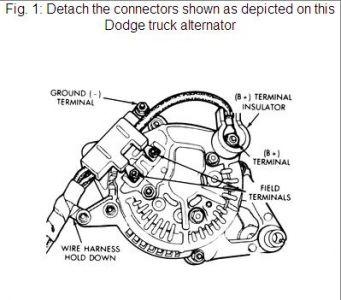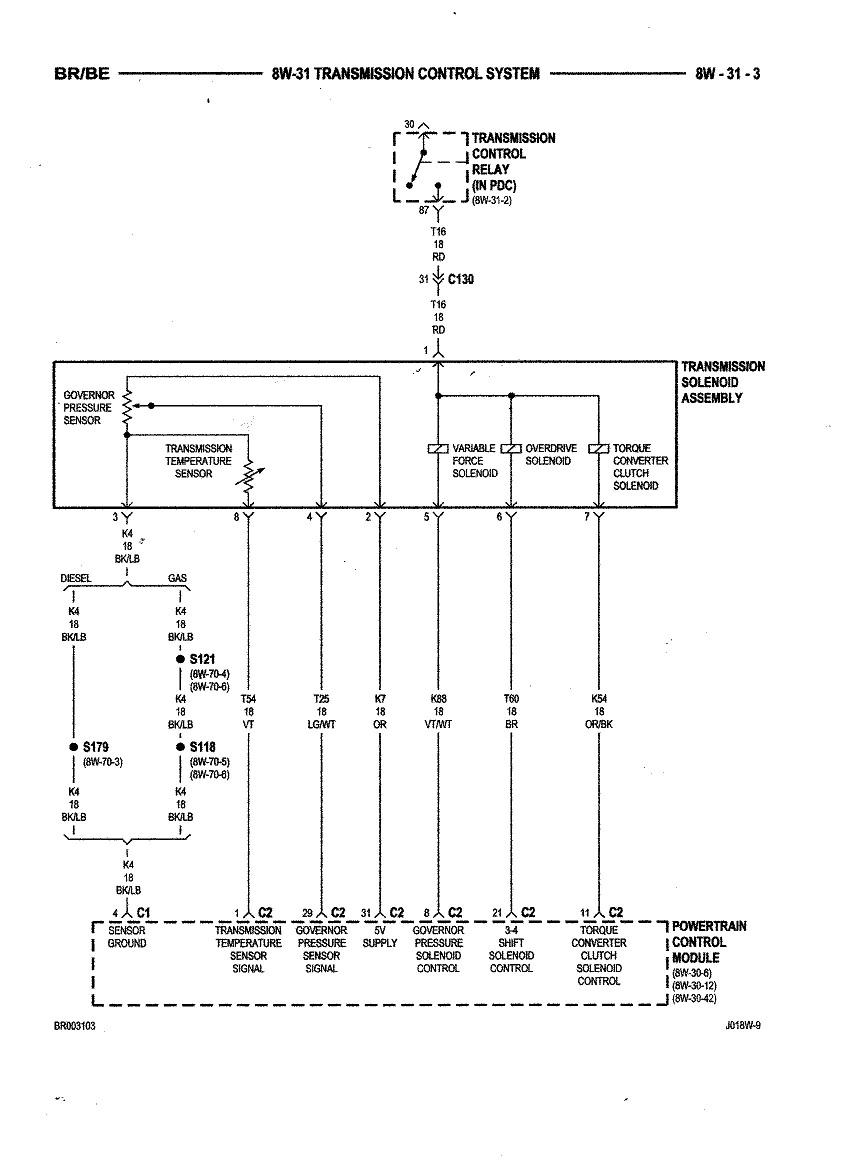Everything posted by IBMobile
-
Brakes, power steering
Is this, may be, fluid from the shock due to a bad seal and it gets pumped with the up and down action of the front suspension?
-
Wishin I knew more about electrical
take it one wire at a time, Pick a wire, follow it, see what it powers. If you don't need or use it remove it. If needed rout the wire next to existing wire harness and cover them with a split wire loom for a clean install and terminate them in the PDC or add an auxiliary fuse box.like the one shown below.
-
47RE Upgrades
That's exactly what happened. Truck was towing and going to slow for a 2-3 shift up; torque convertor working like there's no tomorrow for 20 minuets; trans fluid temp went over 250°F (121°C)..
-
47RE Upgrades
I know the angst you had. After following Jag1 up and down the cow paths of Oregon my trans fluid was dark in color and it was only a couple of thousand miles old. I use Valvoline synthetic. @wil440 if you keep using your old transmission pan put a drain in it. It makes changing the fluid and dropping the pan a lot easier and cleaner. You can drill a 13mm hole in the front left corner of the pan then tack weld a 12mmX1.25 nut on the inside and don't weld all the way around the nut; it's thin sheet metal. Install an engine drain plug with plastic, fiber, or rubber washer. I tighten to 25 Nm.
-
Ground Reference VP44,ECM,PCM,PDC plus TC lock/unlock
Do the wires connect to the back of the alternator like this pictured below? If so, cut the charging cable end (the cable that goes from the B+ alternator terminal to the battery) off and on the other side the rest of the cable that goes to the 140 amp fuse in the PDC. That cable can be verified using an ohm meter testing from the 140 amp fuse to the alternator. leave the rest of the wires connected to the alternator. Now you can run the new cable from the B+ terminal to a fuse or circuit breaker then to the right battery positive terminal.
-
Upgrades to 2000 2500 for towing
If your from another state and just passing through NJ they can pull you over for a smoke test? That doesn't seam right that they can impose there state regulations on an out of state vehicle. What happened to interstate transportation with reciprocity. .
-
Dead pedal I think
There's one right up the road from you in the Mopar1973Man's store.
-
47RE Upgrades
It was when the temp went over 250°F I have the temp sender on the out flow line from the transmission to the trans cooler. The trans temp will normally very from 155° cruising down the freeway to 210° in stop and go traffic when towing. The fluid heat up quickly when under load but is slow to cool after.
-
Upgrades to 2000 2500 for towing
Lots of pulling power but the trade off is higher RPMs when cruising at highway speeds; about 1800 RPMs at 60.MPH. You won't need a mystery switch. the switch is for automatic transmissions. It locks up the torque convertor for direct drive from engine to transmission, something like a clutch disk on your stick shift.
-
Left arm is happy again.
The dash trim, wood grain on some trucks. You are right about that. I've had customers ask me to find them plastic trim parts for their car when I mention that I go to auto bone yard. I ask them "what makes you think the parts in the bone yard are any better than what you have"? Some parts it's better to bit the bullet and buy new; plastic trim parts is one of them.
-
Left arm is happy again.
Every Ram 1500/2500/3500 that I find in the bone yards around here the dash/bezel is either gone or in pieces.
-
Upgrades to 2000 2500 for towing
I'm running the Edge EZ and RV275 injectors (see signature below) and tow the 8K 5er all over. The last month I towed 2624.9 miles with lots of power for the hills. The fuel mileage, hand calculated, was between 12.5 and 13 MPG.
-
Dead pedal I think
There must be something about that area. My injection pump went bad on me just north of Mike a couple years ago.
-
Grid heater switch
That would be me. I put this one on my truck then I put a differ type that is a lot easier to install on @JAG1's work truck the first of May. I'm waiting to see how he likes it before I write an article on it. This is the one that's on my truck.
-
Hey you guys I got to get rid of a skunk.....
Only for a little while...a day or three.
-
New truck
Nice clean truck, you'll have fun with it. The last time I had the trans pan off I added a drain plug to it. I couldn't see spending the money for a bigger pan with a drain. I use my lock up switch all the time when towing with no problems. I really helps when keep the trans temp down when going up long grades in 3ed and engine braking coming down the mountain sides. @JAG1 just can't remember because he's old.
-
Mechanical lift pump
One reason the fuel pumps are in or near the fuel tank is not because its pushing the fuel but rather it's pressurizing the fuel in the lines to keep the fuel from boiling and causing vapor lock. Gasoline, depending on the blend, will start to boil at a temp as low as 104°F (#2 diesel 540°F) and produce vapor bubbles in the fuel line this will cause engine misfire and stalling. Also, when the engine is turned off a check valve keeps pressure in the fuel lines; this is called rest pressure. The rest pressure keeps the fuel from boiling and vapor locking when the car is parked for a short time with a hot engine. The rest pressure bleeds off at a slow rate as the engine cools. Another reason for the fuel pump to be in the fuel tank is to keep it cool. With the pump immures in fuel and cool running the pump does not have to be built as robust as one mounted on the out side of the tank. The vehicle manufacturer also benefits when the pump mounted with the fuel sender unit making for a quick install and is less expensive than a pump and fuel sender mounted separately. This is a design problem that Chrysler inflected on the Cummins engine. Even the VP44 suffers from this and leads us back to this point... mechanical or electric fuel pump...pull or push.
-
Lift pump relay, alternate trigger
That relay is for the VP44 injection pump. The red/light green wire powers the pump circuitry.
-
Mechanical lift pump
The old cars had little diaphragm fuel pumps attached to the side of the engineblock powered by a lever ridding on a camshaft lobe sucking fuel all the way from the tank. The 12 valve diesel engine had the same set up. Now a mechanical straight cut gear fuel pump at the front of engine being driven by hundreds of horse power from front crankshaft pully sucks my fuel just fine with no electrical problems of any kind.
-
o/d issues
OK, The O/D switch is a momentary type, when pushed it switches a transistor relay in the PCM, then the ground for the O/D light is completed and the ground for the O/D solenoid is removed (open circuit) push it again and the ground for the light is removed (open circuit) and the ground for the O/D solenoid is closed. The light get its power from fuse #14 in the junction block. If you have good power and grounds for the PCM, the wires from the PCM to the switch, instrument cluster, and trans mission all test good the it has to be the PCM.
-
o/d issues
Do you have a factory service manual with wire diagrams?
-
o/d issues
You should have earth (ground) when you probe the BL/LG (black/ light green) of the O/D switch. This wire is connected to earth at the inside left cowl near left hand drive steering column.
-
o/d issues
You've told us all the things you've done to try an fix a problem with the overdrive but not what the problem is in your post..
-
Brakes, power steering
30k , or 24 months for brake fluid because it is hydroscopic, is a good interval for these fluids but the Chrysler Corp didn't think to mention this in either the factory service manual or the owners manual.
-
Mechanical lift pump
It's like running the fuel through a window screen, keeps the big bugs out but lets the gnats through.



.jpg.be1da7b6baa72406f68be4374d3afb55.jpg)




.jpg.cafb9aa4aff88cb700478f66632b6aed.jpg)

.jpg.14ee322a9391124a16c48e7df64dc0a1.jpg)
